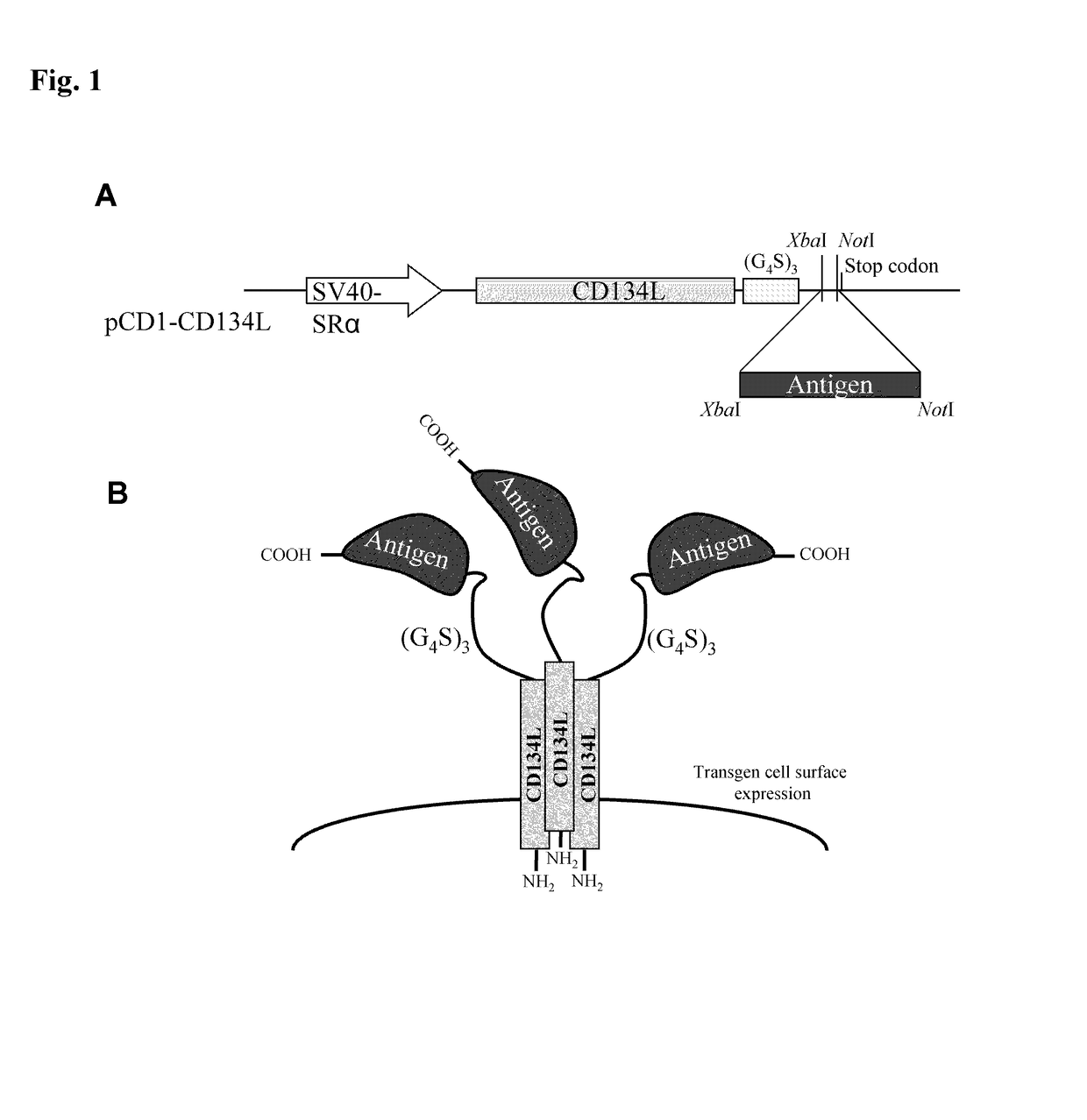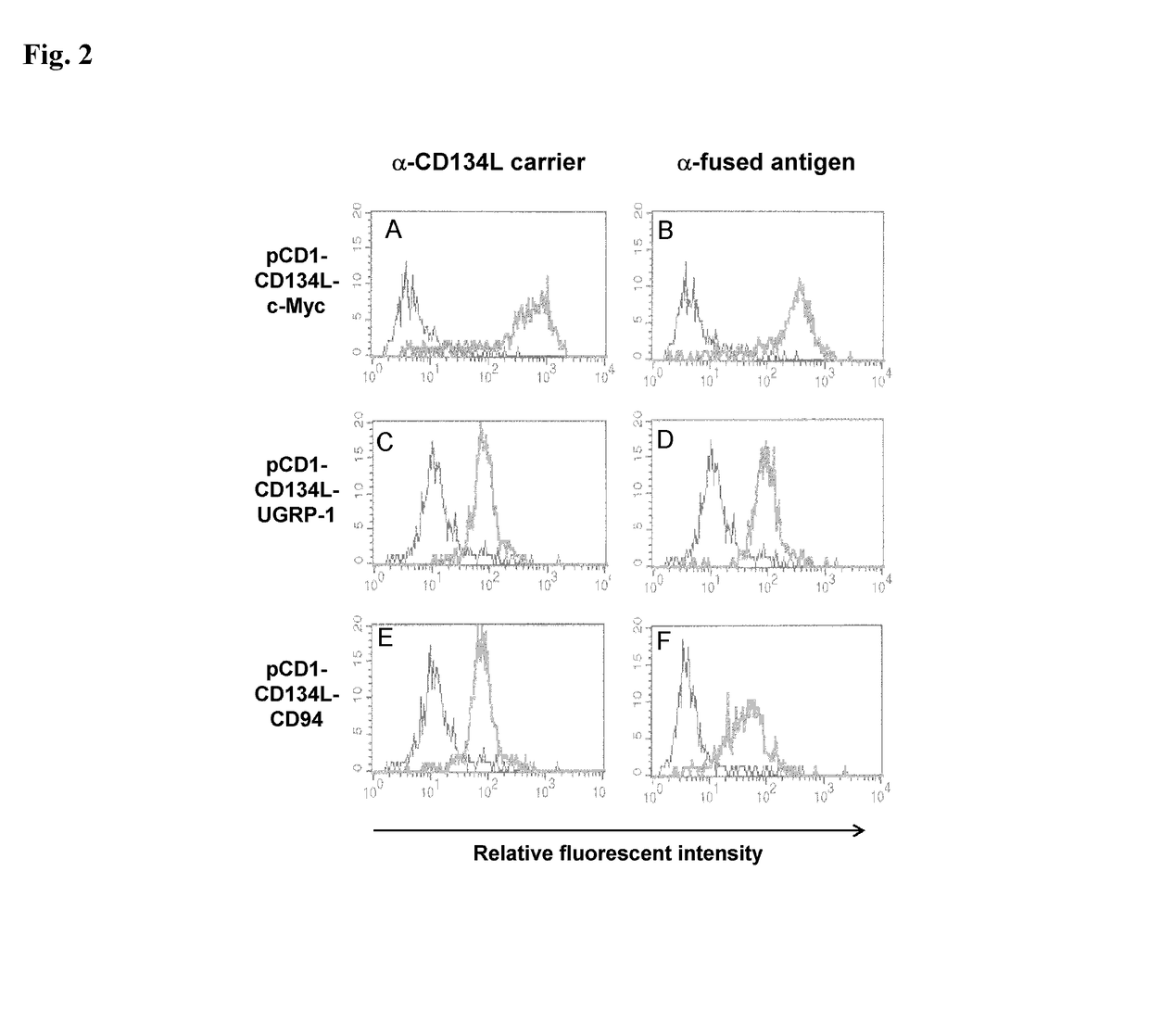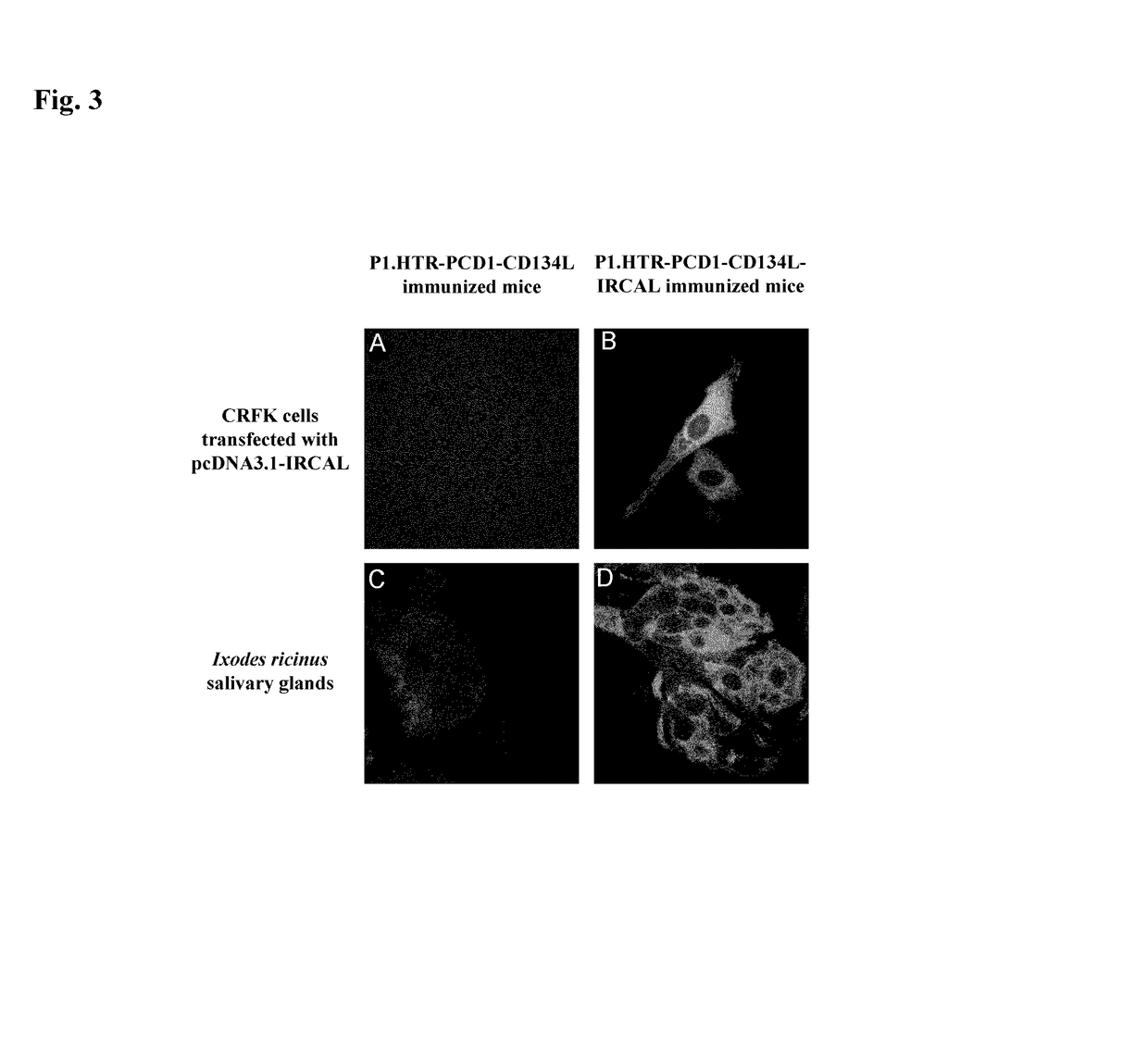Method for producing antibody using “naked” expression vector expressing type II transmembrane fusion protein
a transmembrane fusion protein and expression vector technology, applied in the field of producing an antibody by gene immunization, can solve the problems of no antibody generation, low titer of generated antibody, and large amount of purified antigenic protein
- Summary
- Abstract
- Description
- Claims
- Application Information
AI Technical Summary
Benefits of technology
Problems solved by technology
Method used
Image
Examples
examples 1-12
Example 1
Preparation of an Expression Vector
[0158]An expression vector, referred to as “pCD1-CD134L” was constructed in order to determine if CD134L could be used as a carrier for the cell surface expression of antigens which have been bound to its carboxy terminus.
[0159]To construct this vector, pCD1 was used. pCD1 is a derivative of pEBS-PL, taught by Bontron, et al., Mol. Cell Biol., 17:4249-4258 (1997), incorporated by reference, which encodes a β-lactamase gene to permit bacterial selection, and “hph76,” which is a gene which provides hygromycin resistance, driven by the SV40 early promoter.
[0160]To prepare the expression vector, cDNA for human type II transmembrane protein CD134L cDNA, as taught by Miura, et al., Mol. Cell Biol., 11:1313-1325 (1991), incorporated by reference in its entirety, followed by a (G4S)3 (SEQ ID NO: 31) coding linker, an XbaI / NotI cloning site, and a stop codon, were inserted downstream of the SR alpha promoter (Takebe, et al., Mol. Cell Biol., 8:466-...
example 2
Preparation of Nucleic Sequences Encoding the Antigenic Moiety
[0163]This example elaborates on the antigens referred to supra. Portions of 5 different antigens were cloned using PCR into the pCD1-CD134L vector. Specifically, cDNA encoding amino acids 410-419 of c-Myc; 21-93 of UGRP-1, 36-179 of CD94, 17-413 of tick calreticulin (“IRCAL”), and 48-87 of Vaccinia virus A56 were cloned into the vector described supra, using the primers of SEQ ID NOs: 5-17. These primers were designed to create XbaI and NotI restriction sites at the 5′ and 3′ ends, in order to clone them in frame with the (G4S)3 (SEQ ID NO: 31) linker.
[0164]In detail, a cDNA encoding Ixodes ricinus calreticulin (IRCAL) (Xu et al., J Parasitol 91, 1326-31 (2005)) was produced by RT-PCR reactions on mRNA purified from tick salivary glands as described elsewhere (Daix et al., Insect Mol Biol 16, 155-66 (2007)). RT reactions were performed on 150 ng of I. ricinus salivary gland mRNA using SuperScript III First-Strand Synthes...
example 3
Immunofluorescent Staining of Cells Transformed with the Construct
[0168]Following the cell selection described supra, hygromycin resistant cells were tested to determine if they expressed CD134L and the fused antigen on their surfaces.
[0169]Indirect immunofluorescent stainings were performed on three types of samples: cells in suspension, cell monolayers grown on glass coverslips and micro-dissected tick salivary glands. All types of samples were fixed in phosphate-buffered saline (PBS) (PBS: 3 mM KCl, 1.5 mM KH2PO4, 0.14 M NaCl, 6.5 mM Na2HPO4, pH 7.2) containing 4% (w / v) paraformaldehyde (Merck) for 15 min on ice and then 30 min at room temperature. Where indicated, after washing with PBS, the samples were permeabilized in PBS containing 0.1% (w / v) NP40 (Fluka) for 20 min at 37° C. Immunofluorescent stainings (incubation and washes) were performed in PBS containing 10% (v / v) FCS (PBSF). The samples were incubated at 37° C. for 45 min with primary antibodies. The following primary ...
PUM
| Property | Measurement | Unit |
|---|---|---|
| pH | aaaaa | aaaaa |
| size | aaaaa | aaaaa |
| length | aaaaa | aaaaa |
Abstract
Description
Claims
Application Information
 Login to View More
Login to View More - R&D
- Intellectual Property
- Life Sciences
- Materials
- Tech Scout
- Unparalleled Data Quality
- Higher Quality Content
- 60% Fewer Hallucinations
Browse by: Latest US Patents, China's latest patents, Technical Efficacy Thesaurus, Application Domain, Technology Topic, Popular Technical Reports.
© 2025 PatSnap. All rights reserved.Legal|Privacy policy|Modern Slavery Act Transparency Statement|Sitemap|About US| Contact US: help@patsnap.com



